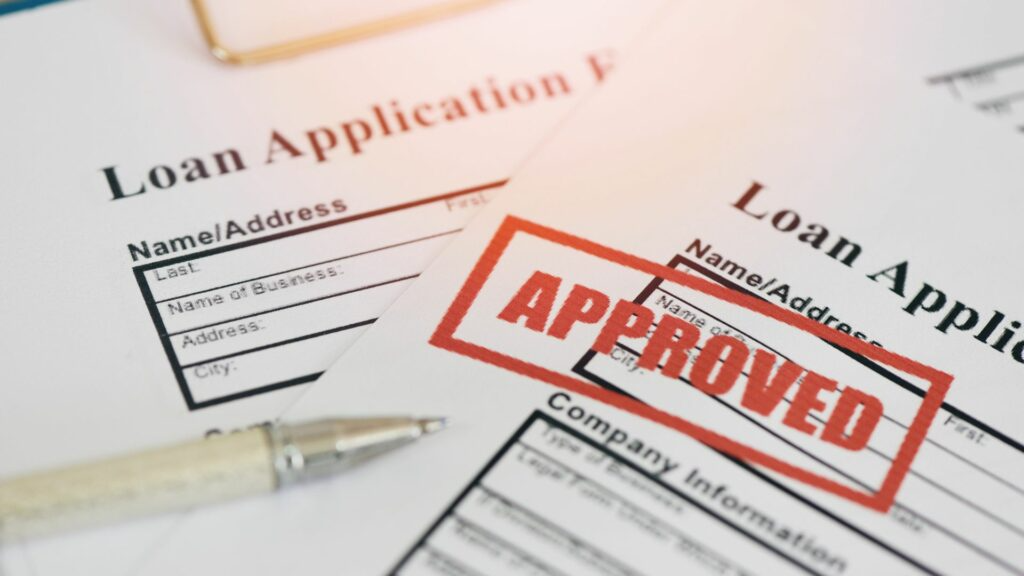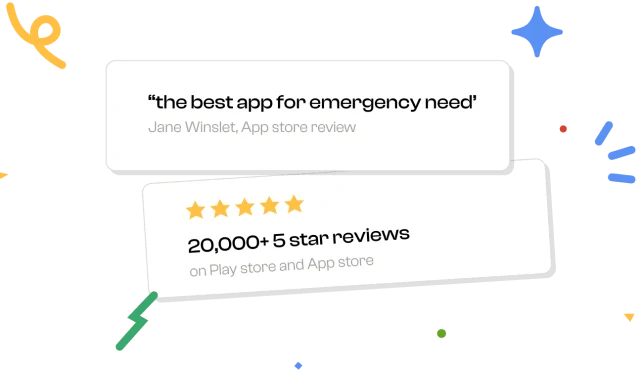Are you in need of quick cash for an emergency or a major purchase? Personal loans can be a good option for you. However, before jumping into any loan agreements, it’s essential to understand the different types of personal loans, the advantages and disadvantages, and how to compare lenders to choose the best option for your needs. Follow this step-by-step guide to get started with your personal loan application. Beem will find the best personal loan offers for you. Simply compare personal loan options and get the best rates as per your requirements.
How do bank loans work
Understanding how personal bank loans work is essential before applying. Here’s a simplified overview:
- Application: You complete the loan application, providing the documentation outlined earlier.
- Credit Check: The bank reviews your credit history, income, and other relevant factors to determine your eligibility and loan terms.
- Loan Approval: If your application is approved, the bank provides you with the loan amount, interest rate, and repayment terms.
- Repayment: You make regular monthly payments, typically over a fixed term. The payments include principal and interest, helping you repay the loan over time.
- Early Repayment: Some loans allow early repayment without penalties, helping you save on interest if you can pay off the loan before the term ends.
Understanding Personal Loans
Before applying for a personal loan, it’s crucial to understand what it is and how it works. Personal loans are a popular choice for many people because they offer a way for you to get money when you need it, without having to put up any collateral.
Personal loans are usually unsecured. That means you don’t need collateral to obtain one. This makes personal loans a great option for people who don’t own property or other assets that they can use as collateral. However, because personal loans are unsecured, it can come with high-interest rates and strict eligibility requirements.
What is a Personal Loan?
You can use a personal loan in various areas, such as consolidating debt, paying for a wedding, or making home improvements. Personal loans are typically offered by banks, credit unions, and online lenders. The amount you can borrow and the interest rates you’ll pay will depend on a variety of factors, including your credit score, your income and other financial obligations.
When you make an application for a personal loan, your lender will look at both your credit history and other financial information to determine whether you’re eligible for the loan. If you’re approved, you’ll receive a lump sum of money that you can use for your intended purpose. You’ll then be required to make monthly payments on the loan, which will include both the principal and interest.
What are the Types of Personal Loans?
Personal loans usually come in two types: secured and unsecured. Secured loans need collateral, such as a car or property, to secure the loan. Unsecured loans do not need collateral but can come with high-interest rates and strict eligibility requirements.
Secured personal loans can be typically easier to qualify for than unsecured loans because the lender has the security of the collateral to fall back on if you default on the loan. However, if you do default on the loan, you could lose your collateral.
Unsecured personal loans are generally a good option for people who don’t have collateral to put up, but they may be more difficult to qualify for. Because the lender doesn’t have any collateral to fall back on, they’ll want to be sure that you come with a good credit history and a steady source of income before approving you for the loan.

Also Read: Which Bank is Best for a Personal Loan?
What Documents Do You Need to Apply for a Personal Loan?
When learning how to get a personal loan from a bank, having the proper documentation is crucial. Here are the essential documents you’ll need:
- Proof of Identity and Legal Residency: A valid driver’s license, passport, or other government-issued ID to verify your identity and legal residency status.
- Proof of Income: Recent pay stubs, tax returns, or other income documentation to demonstrate your ability to make loan payments.
- Credit History: The bank will check your credit score and history to assess your creditworthiness. Make sure you have a clear understanding of your credit profile before applying.
- Employment Information: Proof of stable employment, including details such as your employer’s name, address, and contact information.
- Financial Statements: Recent bank statements and other documents clearly show your financial situation.
- Loan Purpose: Depending on the bank, you may need to provide information about the purpose of the loan, such as debt consolidation, home improvement, or medical expenses.
Advantages and Disadvantages of Personal Loans
Like any financial product, personal loans have their own set of advantages and disadvantages. The main advantage here with personal loans is that they provide a lump sum of money that you can use for various purposes. They also typically enjoy lower interest rates when compared with credit cards, which can save you money in interest charges over time.
However, personal loans can have shorter repayment terms, which can make your monthly payments higher. You may also need good credit to qualify for a personal loan. If you have a history of poor credit, you may not be able to get approved for a personal loan, or you may be charged a higher interest rate.
Also Read: Are Personal Loans Tax Deductible?
Another disadvantage of personal loans is that they can be difficult to pay off if you don’t have a steady source of income. If you happen to lose your job or experience a financial setback, you may find it difficult to make your monthly loan payments. This can lead to late fees, additional interest charges, and even default.
Overall, personal loans can be a good option for people who need money for a specific purpose, such as consolidating debt or making home improvements. However, make sure you do your research and shop around to locate the best interest rates and terms before applying for a loan.
| Loan type | Purpose | Loan length | Interest rates | Credit check | Collateral required |
| Personal loan | A wide range of personal expenses, from home improvement to vacations | 12 to 84 months | Up to 36% annual percentage rate (APR) | Yes | Sometimes |
| Debt consolidation loan | Combining debts from various sources into one loan | 12 to 84 months | Up to 36% APR | Yes | No |
| Mortgage | To purchase a home | Typically, 15 or 30 years | Averaging 4.99% to 7.08% APR for 30-year fixed rates | Yes | Yes |
| Home equity loan | A wide range of purposes, including home improvement projects and medical bills | Five to 30 years | Roughly 7.49% to 13.99% APR for 30-year fixed rates | Yes | Yes |
| Student loan | To pay for a post-secondary education | 10 years (federal); five to 15 years (private) | 5.50% interest rate (federal); starting at 4.24% APR (private) | Yes | No |
| Auto loan | To finance a vehicle | 12 to 84 months | Starting at 4.00% APR | Yes | Yes |
| Small business loan | To fund your business expenses | Up to 300 months | Starting at 3.49% APR | Yes | Yes |
| Credit builder loan | To improve your credit score if you have no or low credit | 24 months | Starting at 4.10% APR | Sometimes | Yes |
| Payday loan | Can be used for small purchases | Two to four weeks | Up to 400% APR | No | No |
How do bank loans work
Understanding how personal bank loans work is essential before applying. Here’s a simplified overview:
- Application: You complete the loan application, providing the documentation outlined earlier.
- Credit Check: The bank reviews your credit history, income, and other relevant factors to determine your eligibility and loan terms.
- Loan Approval: If your application is approved, the bank provides you with the loan amount, interest rate, and repayment terms.
- Repayment: You make regular monthly payments, typically over a fixed term. The payments include principal and interest, helping you repay the loan over time.
- Early Repayment: Some loans allow early repayment without penalties, helping you save on interest if you can pay off the loan before the term ends.
Determine Your Loan Purpose and Amount
Before applying for a personal loan, take a step back and determine why you need it and how much you need. Personal loans can help you finance a variety of expenses, but it’s crucial to have a clear understanding of your loan purpose and budget before taking on any debt.
One common reason for taking out a personal loan is consolidation of debt. If you have several high-interest debts, such as credit card balances or medical bills, consolidating them into one loan with a much lower interest rate can help you save money on the interest and simplify your monthly payments.
Another popular use for personal loans is home improvements. Whether you’re trying to renovate your kitchen, add a new bathroom, or make other upgrades to your home, a personal loan can help you finance these projects without tapping into your savings or using high-interest credit cards.
Medical bills can also be a significant expense that may require a personal loan. If you or your loved one has a medical emergency or needs a costly procedure, a personal loan can help you cover the expenses and pay them off over time.
Finally, personal loans can be used for big purchases like a car, boat, or RV. If you’re looking to make a big-ticket purchase but don’t actually have that kind of cash in hand, a personal loan can help you make the purchase and pay it off over time.
How Much Should You Borrow?
Once you’ve determined your loan purpose, it’s time to estimate how much you need to borrow. This will depend on a variety of factors, including your income, expenses, and the cost of your loan purpose.
It’s important to borrow only what you need, as borrowing too much can lead to higher monthly payments and more debt. Consider your budget carefully and use online loan calculators to estimate your monthly payments based on your loan amount and interest rate.
Remember, taking out a personal loan is a big financial decision, and it’s important to do your research and choose the right type of loan and lender for your needs. Shop around and do a comparison of rates and terms from multiple lenders to ensure you’re getting the best deal possible.
Check Your Credit Score
Your credit score plays a determining role in showing you qualify for a personal loan and what interest rate you’ll receive. It’s essential to understand what your credit score is and how it affects your ability to borrow money.
A credit score represents your creditworthiness. It’s calculated based on your credit history, including your payment history, outstanding balances, and length of credit history. Credit scores are in the range of 300 to 850 with high scores indicating better creditworthiness.
When you sign up for a personal loan, lenders will use your credit score to evaluate your creditworthiness and determine your ability to repay the loan. A high credit score can lead to lower interest rates and more favorable terms and conditions. A low credit score can land you with high-interest rates and not-so-favorable loan terms.
Why Your Credit Score Matters
Your credit score matters because it’s an essential factor in determining your ability to borrow money. Whether you’re applying for a personal loan, credit card, or mortgage, your credit score will be one of the first points lenders look at when evaluating your application.
A high credit score can typically help you qualify for loans and credit cards, as well as obtain lower interest rates and better loan terms. A low credit score, however, can make it tough to get approved for loans and credit cards, and may result in higher interest rates and less favorable loan terms.
How to Improve Your Credit Score
If your credit score is low, there are steps you can take to prove it. The first step is to check your credit report for errors. Any errors on your credit report can lead to a negative impact on your credit score, so it’s essential to dispute any errors you find.
You can also make your credit score better by making your bill payments on time and clearing any debt you have. Late payments and high balances can negatively impact your credit score, so it’s essential to make payments on time and keep balances low.
Another way to work on your credit score is to avoid opening new credit accounts unless necessary. Each time you apply for credit, it can negatively impact your credit score. It is better to only apply for credit when you need it.
Improving your credit score takes time, but it’s worth the effort. By working on your credit score, you can increase your chances of approval for a personal loan and obtain the best interest rate possible.

Compare Lenders and Loan Options
Once you’ve determined your loan purpose, loan amount and checked your credit score, it’s time to compare lenders and loan options to find the best one for you.
Traditional Banks
Traditional banks offer personal loans with competitive interest rates and fixed repayment terms. However, they may have stricter eligibility requirements, such as a good credit score and a steady income.
Credit Unions
Credit unions are, in most cases, non-profit financial institutions offering personal loans with low-interest rates and flexible repayment terms as compared to traditional banks. However, they may require membership and have limited branches.
Online Lenders
Online lenders offer personal loans with faster approval processes and lower interest rates than traditional banks. They also typically have higher eligibility requirements and may charge fees.
Peer-to-Peer Lending Platforms
Peer-to-peer lending platforms connect borrowers with individual investors who fund their loans. They provide competitive interest rates that usually have flexible repayment terms, but borrowers may need good credit to qualify.
By comparing a bunch of lenders and loan options, you can find the best offer that suits your needs and budget. It is best that you read the fine print, including fees, repayment terms, and any penalties for early repayment.
Also Know About: How to Get the Best Boat Loan Interest Rates
Conclusion
A personal loan can provide you with the quick cash you need to achieve your financial goals. By following this step-by-step guide, you can choose the right loan for your needs, understand the advantages and disadvantages, and compare lenders to obtain the best deal possible. Remember to only borrow what you need, improve your credit score before applying, and read the fine print of any loan agreement. Use Beem to check personalized rates and explore multiple personal loan options ranging from $500 to $100,000.


























